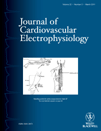Evaluation of Noncontact Mapping by Comparison With Simultaneous Multisite Contact Recordings in Acute Ischemic Ventricular Fibrillation
Dr. Stuart reports serving as a consultant to or on the advisory board of St. Jude Medical, and has received honoraria for talks not directly related to this topic. Other authors: No disclosures.
Abstract
Noncontact Mapping in Acute Ischemic VF. Aim: The study aim was to determine the utility of noncontact mapping in acute ischemic ventricular fibrillation, by direct comparison with simultaneously acquired multisite contact needle recordings.
Materials and Methods: Noncontact mapping has emerged as a promising tool to make percutaneous high-density intracardiac electrical recordings in clinical and research settings. Previous large-animal mapping studies of ischemic VF have used electrodes in contact with the fibrillating myocardium. A previous report of noncontact mapping in VF used a single intracardiac catheter to validate noncontact recordings.
Results: We studied the spontaneous onset of VF in 8 sheep, after acute occlusion of the left anterior descending coronary artery. Simultaneous unipolar recordings of endocardial electrical activation were made with the most endocardial electrode of 32 transmural plunge needles (contact electrograms; CE), and an Ensite noncontact catheter in the left ventricle (noncontact virtual electrograms; NCVE). The lag-shifted morphology cross-correlation between individual NCVE and CE pairs during VF was calculated.
Discussion: The mean lag-shifted cross-correlation coefficient during manually selected sinus rhythm beats was 0.89 ± 0.006, and 0.80 ± 0.009 in VF (P < 0.05). The mean absolute time shift was 7.3 ± 0.5 ms in sinus rhythm, and 23.8 ± 0.9 ms in VF (P < 0.001). Fast Fourier transform demonstrated well-correlated dominant frequencies between CE and NCVE. VF myocardial activation maps of NCVE showed organized wavefronts, but dyssynchronous activation in CE.
Conclusion: These data demonstrate errors in activation timing and sequence with noncontact mapping more prominent during VF than sinus rhythm. (J Cardiovasc Electrophysiol, Vol. 22, pp. 334-339, March 2011)




